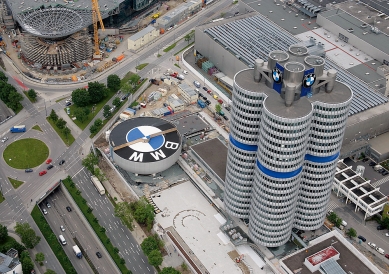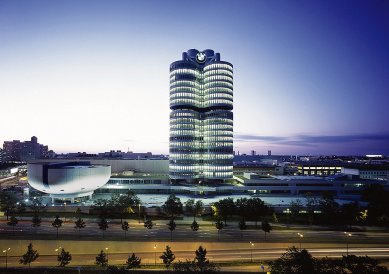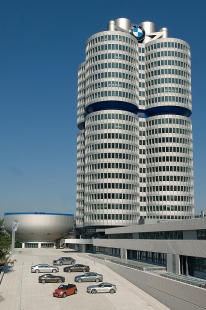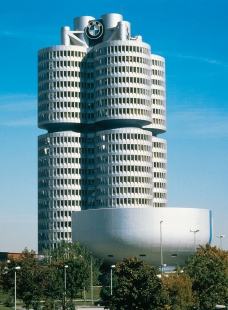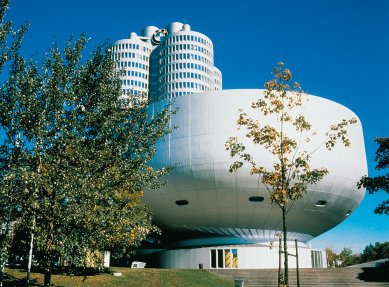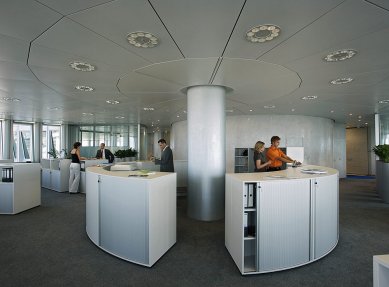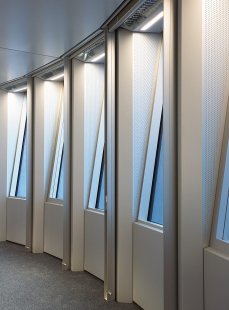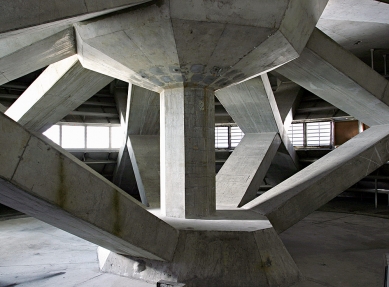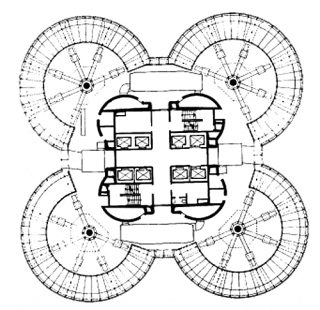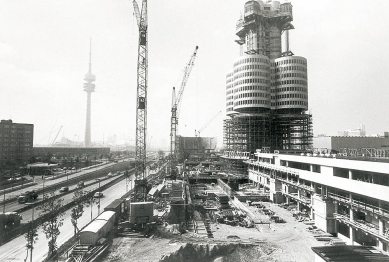
BMW Tower

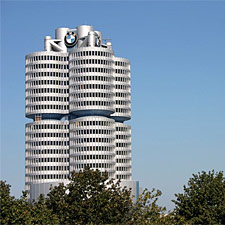 |
The hundred-meter tower was built starting in 1968 according to the design of Viennese professor Karl Schwanzer. The external construction was completed before August 26, 1972, when the summer Olympic Games began in the neighboring sports complex. The tower, along with the bowl-shaped museum building, was ceremonially opened nine months later on May 18, 1973.
The tower has a diameter of 52.3 meters and stands 99.5 meters tall. Before the renovation, 1500 people worked in the 'four-cylinder', and the museum was visited by about 200,000 guests annually. The aluminum facade of the tower is meant to resemble four engine cylinders, while the museum resembles the head of a cylinder. BMW's headquarters was meant to celebrate four-cylinder engines. In the early 1960s, four-cylinder models were successfully introduced to the market, filling the gap in the post-war BMW offering, which consisted of motorcycles, the small Isetta car, and large eight-cylinder models. The new BMW 1500 series utilized a four-cylinder engine and was a compact sports four-door car.
The process of construction was no less interesting than the final result. The twenty-two floors do not stand on the ground but are suspended from a central concrete core. First, a slender core was poured, where the elevators and staircases are now located. Around it, the individual floors gradually began to take shape, but in reverse order to what we are used to. Construction began with the top floor, which was then hydraulically lifted up so that work could continue on the lower floor beneath it. The floors were added downwards, and the construction was pulled upwards.
The English translation is powered by AI tool. Switch to Czech to view the original text source.
0 comments
add comment



